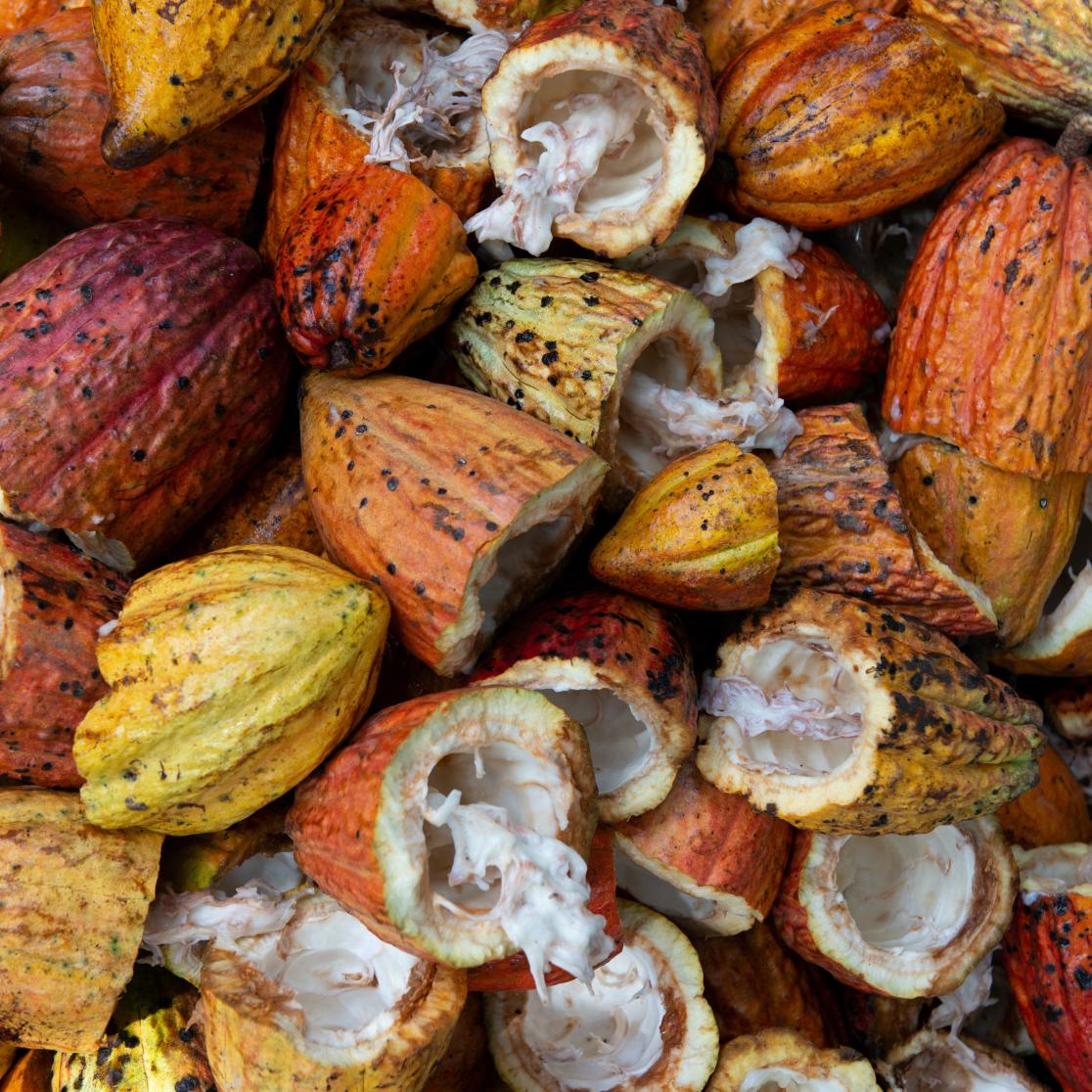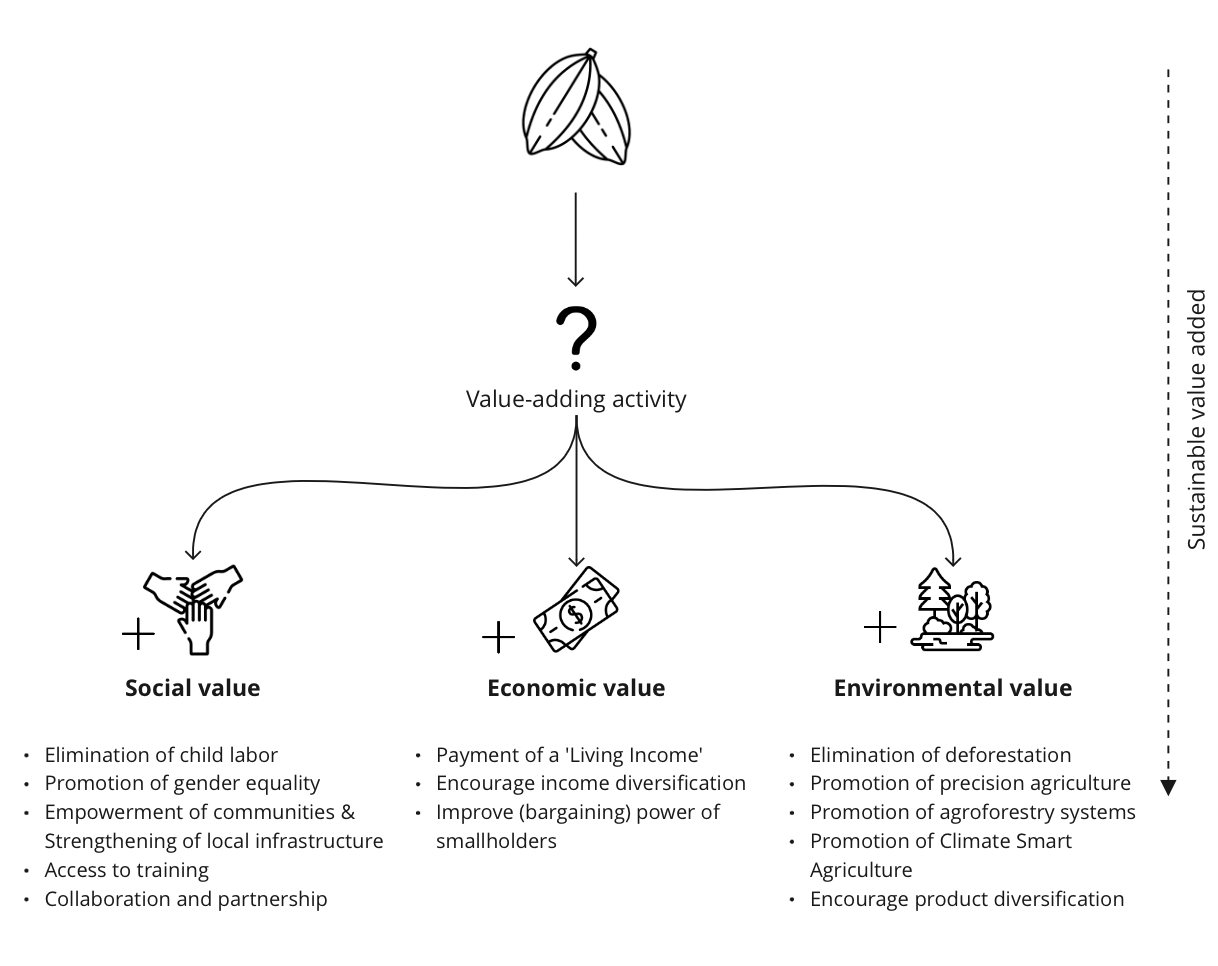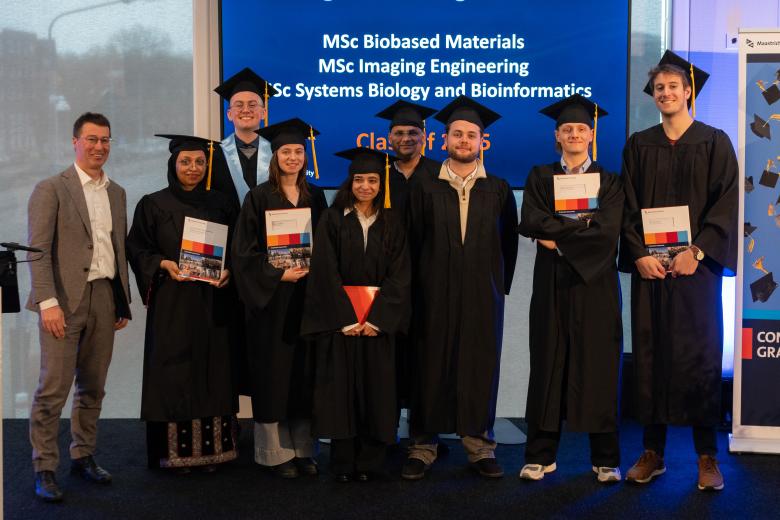Sustainable Value Addition in the Global South – A Comparative Case Study of the Cocoa Value Chain in Ghana
The cocoa value chain in Ghana faces various sustainability challenges. Power asymmetries between chocolate manufacturers in the Global North characterise the cocoa sector in the West African country, as farmers in the Global South have to defer to power structures determined by the companies (Fold, 2002). Moreover, the sector faces poverty, high child labour rates, disadvantaged situations for women, and loss of biodiversity and native forests due to deforestation. In recent decades, various public and private efforts have addressed these challenges. However, scholars investigating their actual impact state that the interventions did not substantially improve the situation (Fountain, 2020). The concept of Sustainable Value Addition proposed in the thesis might be a promising means for companies to account for the complex sustainability issues in the Ghanaian cocoa value chain and, hence, to maintain cocoa production in the future.
Value addition is an economic concept that has been studied thoroughly. However, little research expands the traditional concept of value addition to account for the complex sustainability challenges present in global value chains. The thesis follows emerging scientific voices (Hart & Milstein, 2003; Sadovska et al., 2020; Yang et al., 2017) that challenge the merely economic understanding and proposes the concept of Sustainable Value Addition (SVA). Moreover, it presents a new conceptual framework that operationalises SVA at the farmer level of the Ghanaian cocoa value chain. In this context, two companies that aim to add sustainable value at the farmer level are examined, using a comparative case study approach with qualitative semi-structured interviews. The chosen start-ups, KOA and Kumasi Drinks, are unique in their value-addition approach of using cocoa pulp as a residue of cocoa production to create sustainable benefits at the smallholder level. By juxtaposing farmers' and NGOs' perspectives gathered through interviews, the main research question is answered: To what extent do these companies add sustainable value at the farmer level of the Ghanaian cocoa value chain?

Findings
The study finds that both companies see economic value addition as enablers of social and environmental value addition. The companies aim to provide an additional income stream for smallholders and improve their bargaining and negotiation power. This aligns widely with the challenges and needs of farmers. A lack of money is mentioned as the farmer's core problem. Hence, it is seen as a lever for tackling social and environmental challenges. At the same time, this strong economic focus neglects the social and especially the environmental dimension, which both companies show. Environmental benefits are seen as something that comes along naturally with economic value added. However, the farmers indicated that the impacts of climate change and environmental degradation are not adequately addressed, even though they significantly affect their farming and livelihoods.
In addition, the findings show that collaboration at all levels of the Ghanaian cocoa value chain can be a factor for successful SVA at the farmer level. Whereas KOA emphasises proximity to farmers, among other things, Kumasi Drinks focuses on collaboration with other organisations for impact-making, measurement, and product development. On the farmers' side, the co-creation of solutions and the invention of models of "fair ownership" are seen as important factors that can improve the situation of farmers. A difference between the enterprises can be found in consideration of the situation of women in cocoa farming. While Kumasi Drinks emphasises improving women's livelihoods through access to finance, KOA does not explicitly mention the role of women in the interview.

Recommendations
To further improve SVA at the farmer level, the thesis recommends the following: first, companies may upgrade their measures for adding social value concerning eliminating child labour, precise measures to support women, and access to training. Second, horizontal and vertical collaboration may be further expanded to leverage SVA efforts. This may include co-creating solutions with farmers for developing custom-fit solutions or the implementation of Fair Ownership models. Additionally, intensifying the collaboration between companies might accelerate their impact. Finally, greater attention may be paid to environmental value addition as a thriving environment is crucial for sustaining cocoa production and, hence, the livelihoods of cocoa farmers and the company's business cases in the long term.
Bibliography
|
This article derived from the Master thesis "Sustainable Value Addition in the Global South - A Comparative Case Study of Sustainable Value Addition Companies in the Cocoa Value Chain in Ghana", as part of the Master's Degree "Sustainability Science, Policy & Society" at Maastricht University. The full report can be accessed through Our Education - Fair and Smart Data - Maastricht University. |
Bibliography
Fold, N. (2002). Lead firms and competition in 'Bi-polar'commodity chains: Grinders and branders in the global cocoa‐chocolate industry. Journal of Agrarian Change, 2(2), 228-247. https://doi.org/10.1111/1471-0366.00032
Hart, S. L., & Milstein, M. B. (2003). Creating sustainable value. Academy of Management Perspectives, 17(2), 56-67. https://doi.org/10.5465/AME.2003.10025194
Sadovska, V., Ekelund Axelson, L., & Mark-Herbert, C. (2020). Reviewing value creation in agriculture—A conceptual analysis and a new framework. Sustainability, 12(12), 5021. https://doi.org/10.3390/su12125021
Yang, M., Vladimirova, D., & Evans, S. (2017). Creating and Capturing Value Through Sustainability: The Sustainable Value Analysis Tool A new tool helps companies discover opportunities to create and capture value through sustainability. Research-Technology Management, 60(3), 30-39. https://doi.org/10.17863/CAM.9532
Also read
-
Ron Heeren appointed fellow of the Netherlands Academy of Engineering
Professor Ron Heeren, distinguished university professor at Maastricht University (UM) and director of the Maastricht MultiModal Molecular Imaging Institute (M4i), was appointed as a fellow of the Netherlands Academy of Engineering (NAE) on Thursday 11 December.
-
Mariam Aroian guest researcher at IGIR
Mariam Aroian will visit IGIR for three months, between December 2025 and February 2026. Her current research focuses on copyright and artificial intelligence. -
Christian Ernsten awarded funding for project on recurating colonial-era collections
UnRest focuses on the historically significant yet deeply contested archives and artworks associated with Robert Jacob Gordon (1743–1795) – a Dutch military officer and explorer whose documentation of the Cape region shaped European knowledge of South Africa during the 18th century